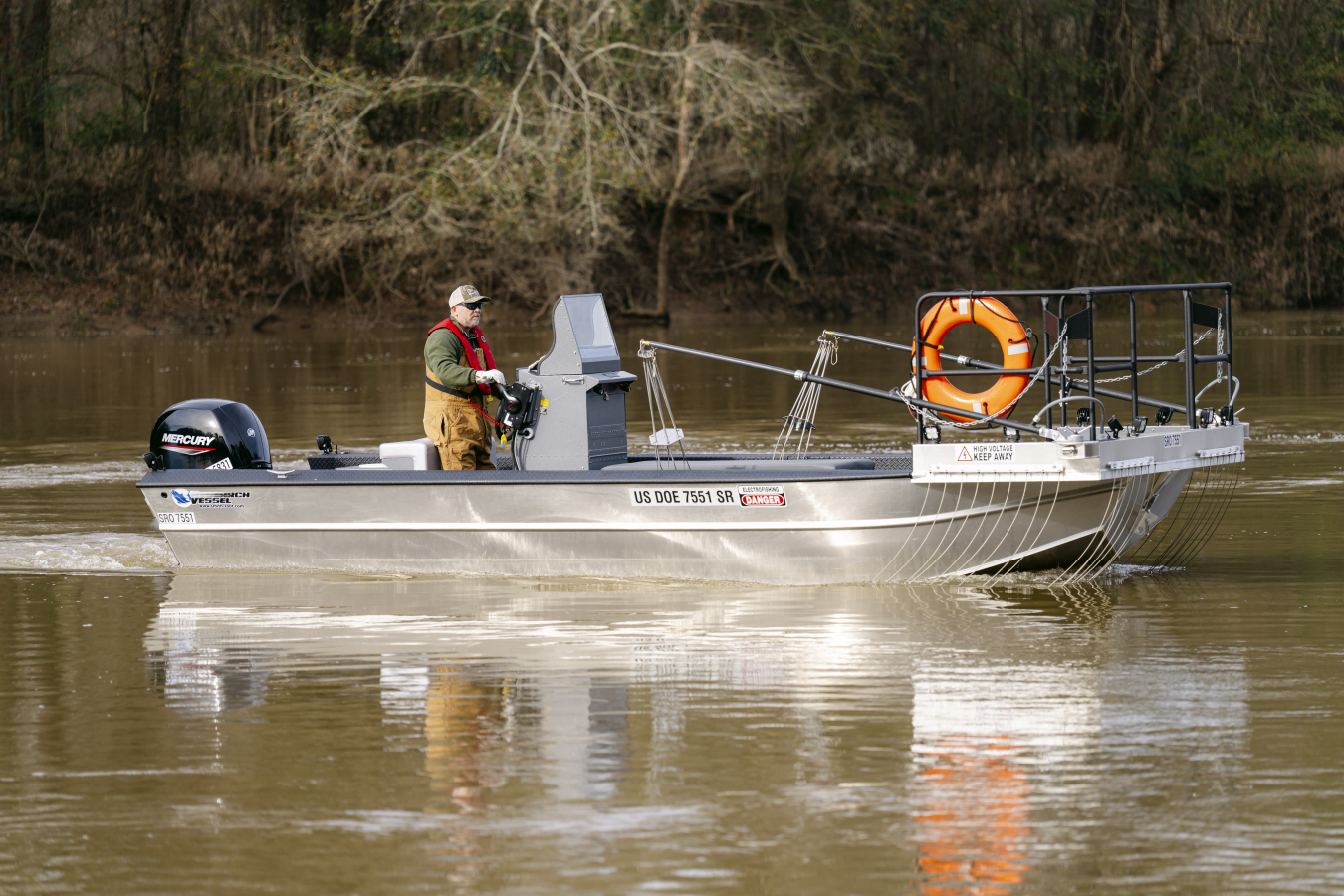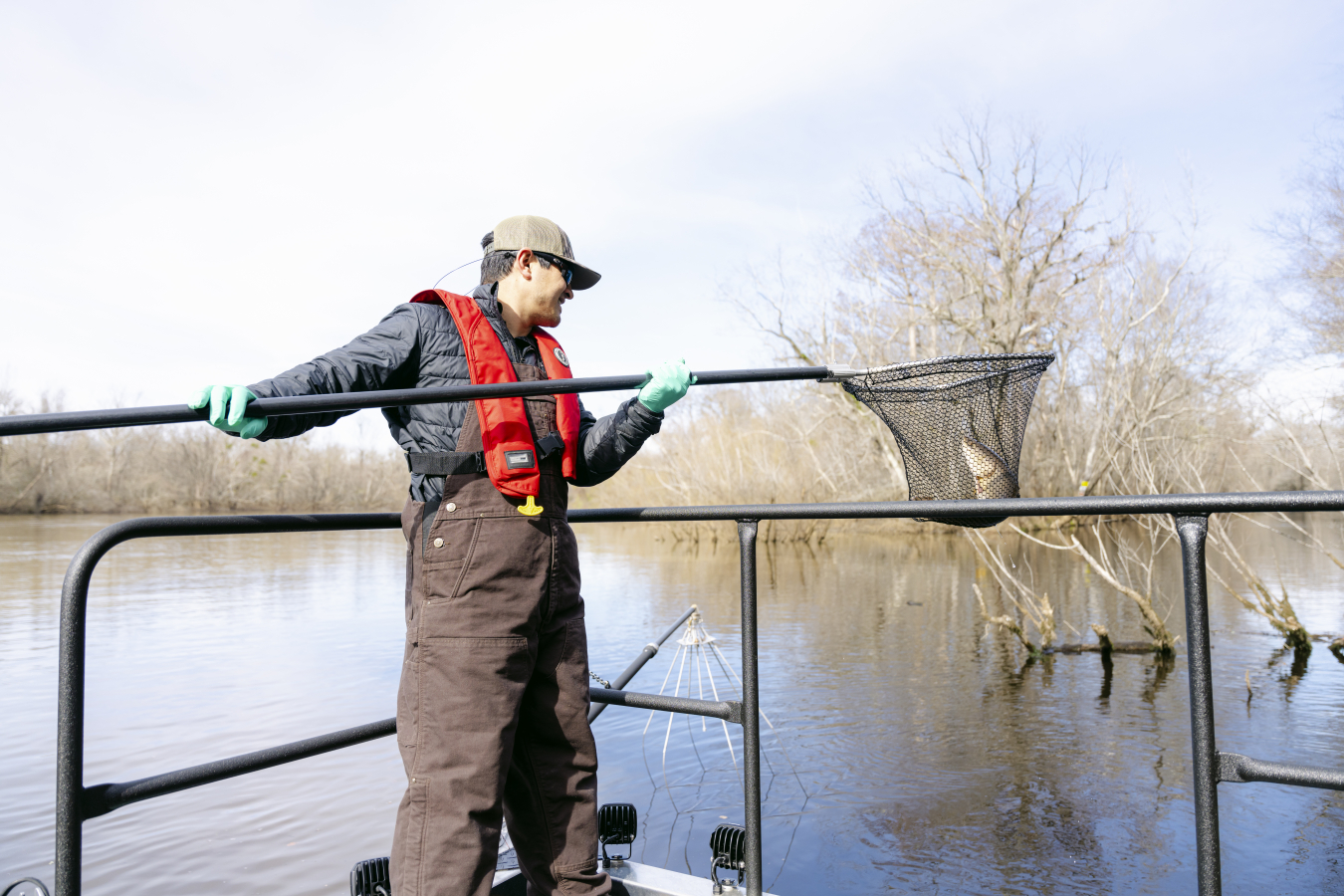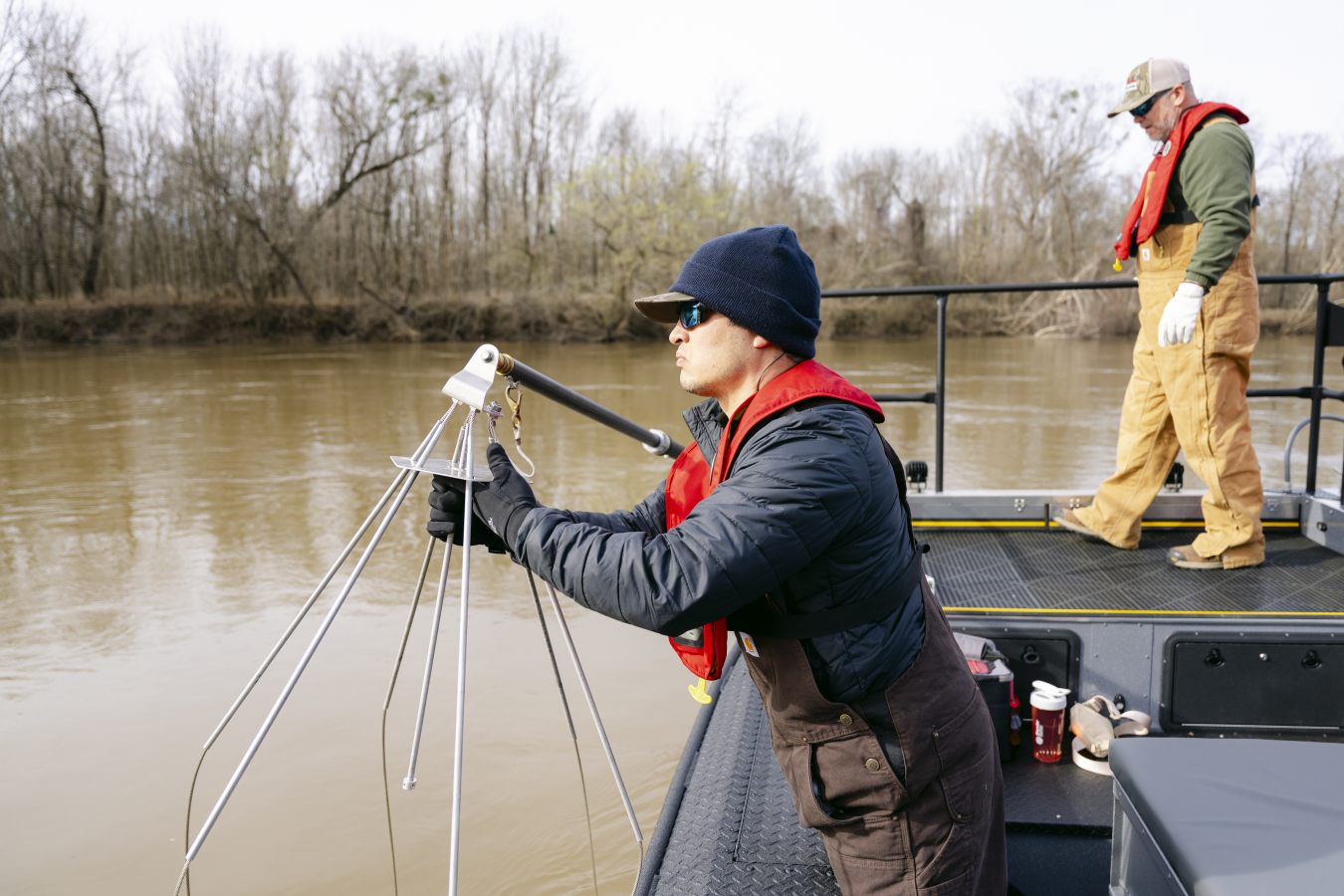The Savannah River Site recently acquired a new state-of-the-art electrofishing boat to bolster sampling efforts as part of work to survey the effects of its operations on people and natural resources surrounding the site.
Office of Environmental Management
March 18, 2025The Savannah River Site’s new electrofishing boat enhances sampling efforts to ensure public safety.
AIKEN, S.C. — The Savannah River Site (SRS) recently acquired a new state-of-the-art electrofishing boat to bolster sampling efforts as part of work to survey the effects of its operations on people and natural resources surrounding the site.
Each year, a team from U.S. Department of Energy (DOE) Office of Environmental Management contractor Savannah River Nuclear Solutions (SRNS) collects approximately 420 fish from the Savannah River using electrofishing. This method creates an electric current in the water to momentarily stun fish for sampling without harming them.
“The acquisition of this cutting-edge electrofishing boat provides our team with more efficient, reliable and safer means to perform our routine collections,” SRNS Environmental Monitoring Operations Lead Jesse Baxley said. “New safety features, like the dual-pedal activation, means better control of the current, which translates to safer responses to the ever-changing conditions on the Savannah River.”
Environmental monitoring specialists perform sampling of the Savannah River approximately two times per month from April to September to ensure the health of species and natural resources surrounding the Savannah River Site.
The team collects fish species representative of those commonly caught and consumed by local fishers and their families. They include bass, panfish and catfish located along the SRS boundary, as well as mullet and shellfish in the coastal waters of Savannah, Georgia.
SRS operates robust programs that ensure safety and compliance with federal, state and local regulations along with DOE orders. The environmental monitoring specialists obtain scientific collection permits and a fishing license, and ensure fish being sampled meet legal size requirements set by the South Carolina and Georgia departments of Natural Resources.
The new boat, equipped with current industry-standard electrical equipment, offers improved safety measures and controls, allowing adaptation to changing conditions on the water.
Using an onboard generator, the boat produces an electric current that is sent through steel cables on two arrays at the bow of the boat and into the water. Enhanced center-console settings provide more control over electrical parameters such as voltage, providing the ability to fine tune the fish being targeted and reduce the overall environmental impact.
The team determines the sampling locations, frequency of sampling, types of analysis and other aspects of the work based on environmental regulations, exposure pathways, public concerns and measurement capabilities. Team members take the samples to the SRNS Environmental Bioassay Lab for radiological and non-radiological analysis.
Environmental Monitoring Specialist John Arena lowers steel cables into the water to prepare for sampling efforts.
With public safety being a primary focus at the site, SRNS Environmental Monitoring Operations also collects samples from soil, sediment, river and stream water, air, crops, dairies, drinking water, vegetation, livestock, and wildlife from the site and surrounding communities.
“Our work takes us all over the Central Savannah River Area, interacting with outside organizations and the public to complete sample collection,” said Baxley. “Analyzed results are reported to the Department of Energy, South Carolina Department of Environmental Services, downstream stakeholders and the public by means of the Annual Site Environmental Report, ensuring transparency and how the site is protecting the public and the environment while performing essential missions.”
Environmental Monitoring Specialist Trey Anderson believes the most rewarding part of the work is keeping the community safe.
“As someone who was born and raised in the area, the work we do is personal, and I am honored to be a part of a team who ensures the safety of the public, myself and my loved ones,” Anderson said.
-Contributor: Fallan Flatow
To receive the latest news and updates about the Office of Environmental Management, submit your e-mail address.




